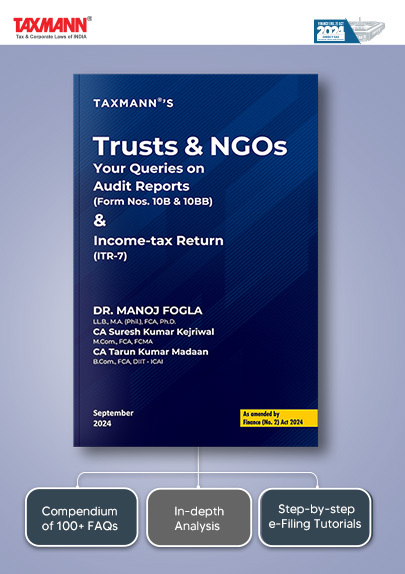Mere Appending Phrase “Yes” Doesn’t Align With Mandate of Sec. 151 for Granting Approval for Reassessment | HC
- Blog|News|Income Tax|
- 2 Min Read
- By Taxmann
- |
- Last Updated on 28 March, 2024
Case Details: Pr. Commissioner of Income Tax vs. Pioneer Town Planners Pvt. Ltd. - [2024] 160 taxmann.com 652 (Delhi)
Judiciary and Counsel Details
-
- Yashwant Varma & Purushaindra Kumar Kaurav, JJ.
- Sanjay Kumar, Sr. SC. for the Appellant.
- Sumit Lalchandani & Salil Kapoor, Advs. for the Respondent.
Facts of the Case
The assessee filed its return of income, which was processed under section 143(1). Subsequently, a search operation was conducted on the premises of an assessee, of which the assessee was one of the concerns. Reassessment proceedings were initiated against the assessee, and a notice under section 148 was issued.
In response, the assessee requested the Assessing Officer (AO) to consider the original return of income as return filed in response to the notice under section 148. The AO completed the assessment by adding to the assessee’s income on account of unexplained share premiums and commission for accommodation entries.
The instant appeal was filed by AO against order of passed by ITAT, wherein it was held that prescribed authority had granted approval under Section 151 in a mechanical manner.
High Court Held
The Delhi High Court held that the satisfaction of the AO is a sine qua non for a valid approval by the higher authorities under Section 151. The section stipulates that the Principal Chief Commissioner or Chief Commissioner or Principal Commissioner or Commissioner must be “satisfied” on the reasons recorded by the AO that it is a fit case for issuing such notice.
In the instant case, the Principal Commissioner of Income Tax (PCIT) merely wrote “Yes” without specifically noting his approval while recording the satisfaction that it is a fit case for issuing notice under Section 148. The satisfaction arrived at by the PCIT must be clearly discernible from the expression used when affixing its signature, according to approval for reassessment under Section 148.
The approval cannot be granted mechanically as it links the facts considered to the conclusion reached. Merely appending the phrase “Yes” does not appropriately align with the mandate of Section 151 as it fails to set out any degree of satisfaction, much less an unassailable satisfaction, for the said purpose. The approval in the instant case is akin to the rubber stamping of “Yes”.
Disclaimer: The content/information published on the website is only for general information of the user and shall not be construed as legal advice. While the Taxmann has exercised reasonable efforts to ensure the veracity of information/content published, Taxmann shall be under no liability in any manner whatsoever for incorrect information, if any.

Taxmann Publications has a dedicated in-house Research & Editorial Team. This team consists of a team of Chartered Accountants, Company Secretaries, and Lawyers. This team works under the guidance and supervision of editor-in-chief Mr Rakesh Bhargava.
The Research and Editorial Team is responsible for developing reliable and accurate content for the readers. The team follows the six-sigma approach to achieve the benchmark of zero error in its publications and research platforms. The team ensures that the following publication guidelines are thoroughly followed while developing the content:
- The statutory material is obtained only from the authorized and reliable sources
- All the latest developments in the judicial and legislative fields are covered
- Prepare the analytical write-ups on current, controversial, and important issues to help the readers to understand the concept and its implications
- Every content published by Taxmann is complete, accurate and lucid
- All evidence-based statements are supported with proper reference to Section, Circular No., Notification No. or citations
- The golden rules of grammar, style and consistency are thoroughly followed
- Font and size that’s easy to read and remain consistent across all imprint and digital publications are applied





 CA | CS | CMA
CA | CS | CMA


